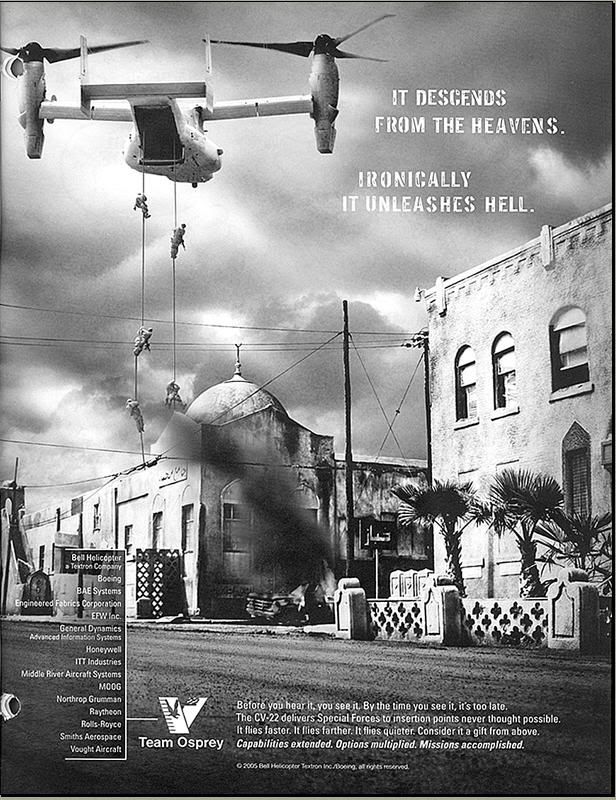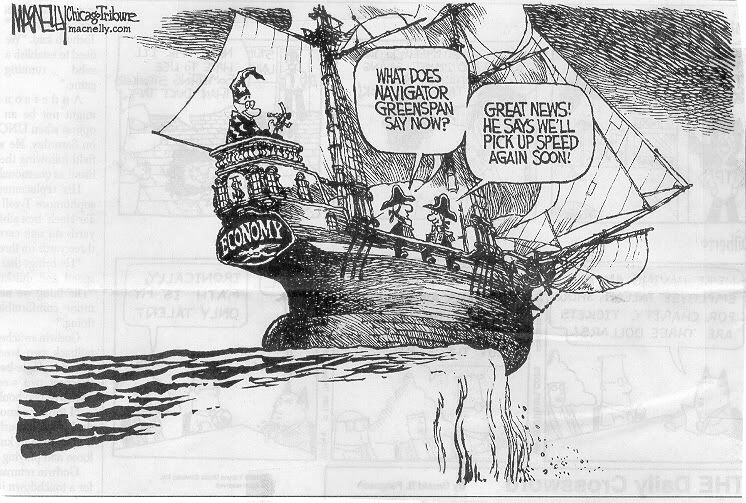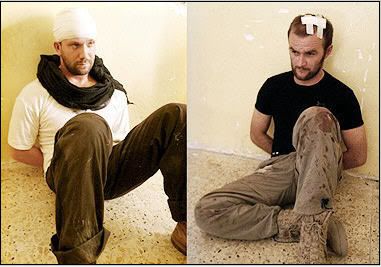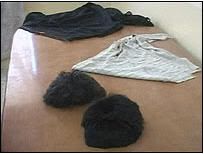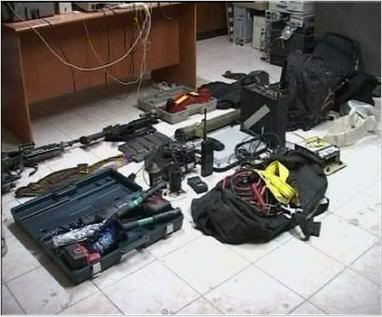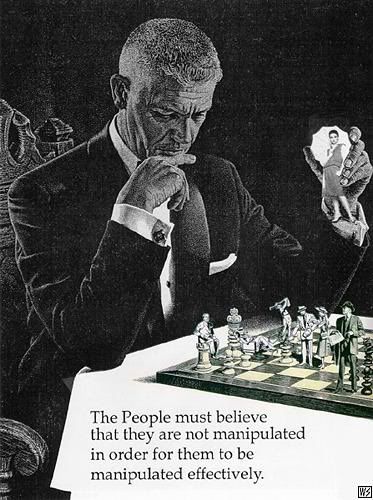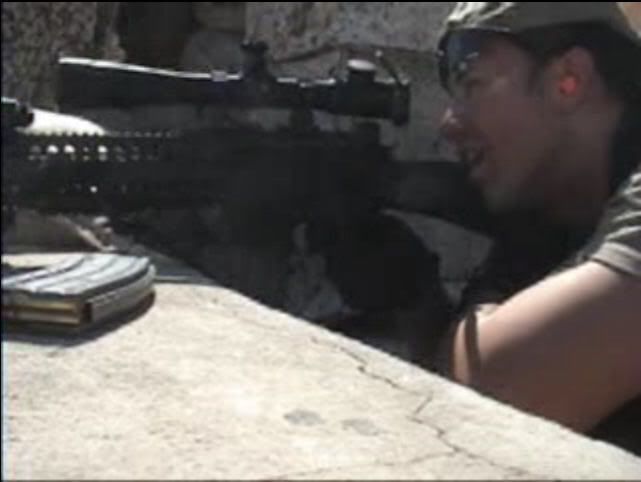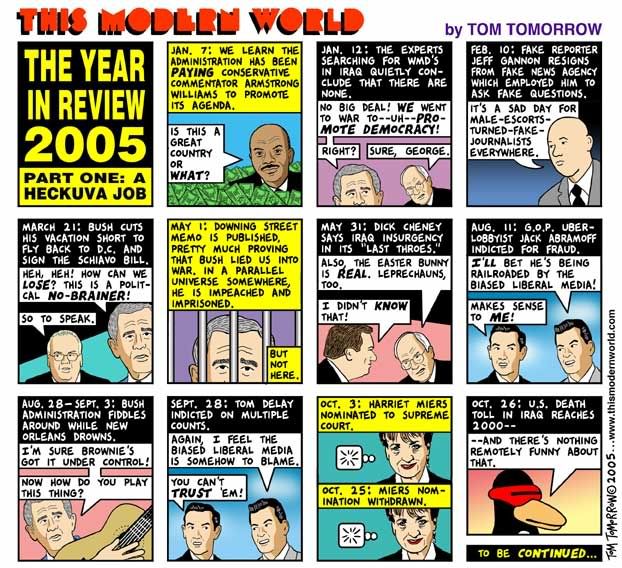
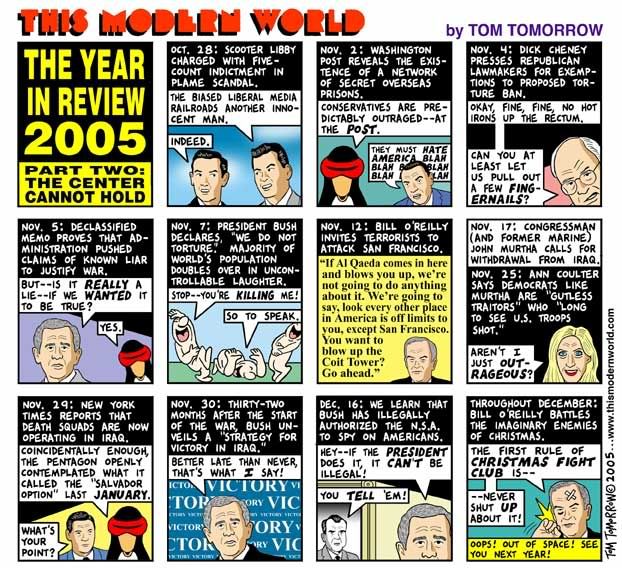
Commentary on politics, economics, and samplings from the alternative media because... the television is lying...

SEC. RUMSFELD: Mr. Congressman, thank you very much. Your question is, of course, right at the heart of an enormously important issue for the Department of Defense. We have a panel in the Quadrennial Defense Review on this subject. We have met with it twice in the last two weeks. We're obviously going to have to meet with it again. It is a big, broad, complicated subject.
As you know, the Department of Defense really is not in charge of its civilian workforce, in a certain sense. It's the OPM, or Office of Personnel management, I guess. There are all kinds of long- standing rules and regulations about what you can do and what you can't do. I know Dr. Zakheim's been trying to hire CPAs because the financial systems of the department are so snarled up that we can't account for some $2.6 trillion in transactions that exist, if that's believable. And yet we're told that we can't hire CPAs to help untangle it in many respects.
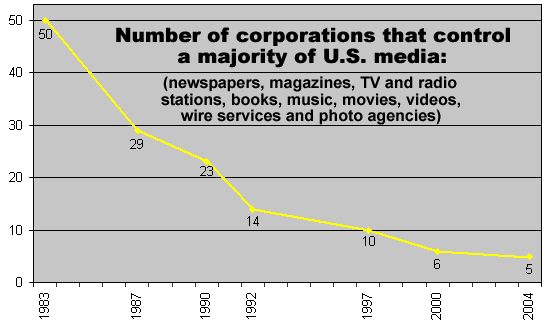

On Christmas Day, 1914, in the first year of World War I, German, British, and French soldiers disobeyed their superiors and fraternized with "the enemy" along two-thirds of the Western Front. German troops held Christmas trees up out of the trenches with signs, "Merry Christmas." "You no shoot, we no shoot."
Thousands of troops streamed across a no-man's land strewn with rotting corpses. They sang Christmas carols, exchanged photographs of loved ones back home, shared rations, played football, even roasted some pigs.
Soldiers embraced men they had been trying to kill a few short hours before. They agreed to warn each other if the top brass forced them to fire their weapons, and to aim high.
A shudder ran through the high command on either side. Here was disaster in the making: soldiers declaring their brotherhood with each other and refusing to fight.
Generals on both sides declared this spontaneous peacemaking to be treasonous and subject to court martial.
By March, 1915 the fraternization movement had been eradicated and the killing machine put back in full operation. By the time of the armistice in 1918, fifteen million would be slaughtered.
Not many people have heard the story of the Christmas Truce. Military leaders have not gone out of their way to publicize it.
On Christmas Day, 1988, a story in the Boston Globe mentioned that a local FM radio host played "Christmas in the Trenches," a ballad about the Christmas Truce(MP3 Here), several times and was startled by the effect. The song became the most requested recording during the holidays in Boston on several FM stations.
"Even more startling than the number of requests I get is the reaction to the ballad afterward by callers who hadn't heard it before," said the radiohost. "They telephone me deeply moved, sometimes in tears, asking, `What the hell did I just hear?'"
I think I know why the callers were in tears. The Christmas Truce story goes against most of what we have been taught about people. It gives us a glimpse of the world as we wish it could be and says, "This really happened once." It reminds us of those thoughts we keep hidden away, out of range of the TV and newspaper stories that tell us how trivial and mean human life is. It is like hearing that our deepest wishes really are true: the world really could be different.

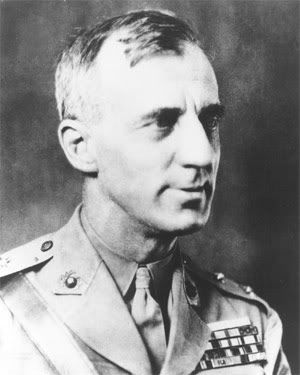
WAR is a racket. It always has been.
It is possibly the oldest, easily the most profitable, surely the most vicious. It is the only one international in scope. It is the only one in which the profits are reckoned in dollars and the losses in lives.
A racket is best described, I believe, as something that is not what it seems to the majority of the people. Only a small "inside" group knows what it is about. It is conducted for the benefit of the very few, at the expense of the very many. Out of war a few people make huge fortunes.
In the World War [I] a mere handful garnered the profits of the conflict. At least 21,000 new millionaires and billionaires were made in the United States during the World War. That many admitted their huge blood gains in their income tax returns. How many other war millionaires falsified their tax returns no one knows.
How many of these war millionaires shouldered a rifle? How many of them dug a trench? How many of them knew what it meant to go hungry in a rat-infested dug-out? How many of them spent sleepless, frightened nights, ducking shells and shrapnel and machine gun bullets? How many of them parried a bayonet thrust of an enemy? How many of them were wounded or killed in battle?
Out of war nations acquire additional territory, if they are victorious. They just take it. This newly acquired territory promptly is exploited by the few – the selfsame few who wrung dollars out of blood in the war. The general public shoulders the bill.
And what is this bill?
This bill renders a horrible accounting. Newly placed gravestones. Mangled bodies. Shattered minds. Broken hearts and homes. Economic instability. Depression and all its attendant miseries. Back-breaking taxation for generations and generations.
For a great many years, as a soldier, I had a suspicion that war was a racket; not until I retired to civil life did I fully realize it. Now that I see the international war clouds gathering, as they are today, I must face it and speak out.
I spent 33 years and four months in active military service and during that period I spent most of my time as a high class muscle man for Big Business, for Wall Street and the bankers. In short, I was a racketeer, a gangster for capitalism. I helped make Mexico and especially Tampico safe for American oil interests in 1914. I helped make Haiti and Cuba a decent place for the National City Bank boys to collect revenues in. I helped in the raping of half a dozen Central American republics for the benefit of Wall Street. I helped purify Nicaragua for the International Banking House of Brown Brothers in 1902–1912. I brought light to the Dominican Republic for the American sugar interests in 1916. I helped make Honduras right for the American fruit companies in 1903. In China in 1927 I helped see to it that Standard Oil went on its way unmolested.
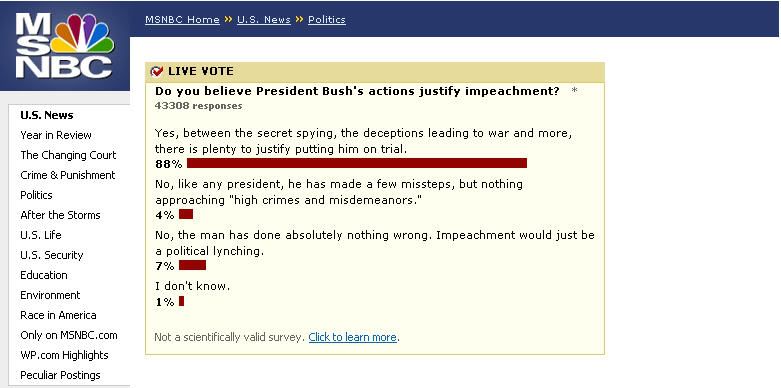

Last month, Republican Congressional leaders filed into the Oval Office to meet with President George W. Bush and talk about renewing the controversial USA Patriot Act.
Several provisions of the act, passed in the shell shocked period immediately following the 9/11 terrorist attacks, caused enough anger that liberal groups like the American Civil Liberties Union had joined forces with prominent conservatives like Phyllis Schlafly and Bob Barr to oppose renewal.
GOP leaders told Bush that his hardcore push to renew the more onerous provisions of the act could further alienate conservatives still mad at the President from his botched attempt to nominate White House Counsel Harriet Miers to the Supreme Court.
“I don’t give a goddamn,” Bush retorted. “I’m the President and the Commander-in-Chief. Do it my way.”
“Mr. President,” one aide in the meeting said. “There is a valid case that the provisions in this law undermine the Constitution.”
“Stop throwing the Constitution in my face,” Bush screamed back. “It’s just a goddamned piece of paper!”
I’ve talked to three people present for the meeting that day and they all confirm that the President of the United States called the Constitution “a goddamned piece of paper.”

We put our reputation on the line every time we publish a story that depends on information from anonymous sources. Sometimes we get burned and when we do we admit it publicly, take our well-deserved lumps, and move on.
In 2003, we published reports that intelligence professionals had raised doubts about the existence of weapons of mass destruction in Iraq and questioned claims of a link between Saddam Hussein and Osama bin Laden. Our detractors claimed we made the whole thing up. Two years later, we were proven right.
Last year, when we published reports on the President’s increasing temper tantrums, the doubters again claimed the reports were fantasy. Yet mainstream media outlets reported the same thing this year. We were right…and we got it first.
We were the first news outlet to identify the names of women who claimed sexual abuse by Bill Clinton when he was attorney general and later governor of Arkansas. We were the first news outlet to report on the ethical problems of many members of Congress in our series: America’s Criminal Class: The Congress of the United States. And we were the first to report on the abuse of underage girls on teen model web sites. Links to all of these award-winning stories can be found on our home page.
That doesn’t mean you should take everything we print as gospel. Never do that with us or any other news source. Do your own research and reach your own conclusions. And consider the record of the sources you use for news and information. We’ve published more than 25,000 stories since going online on October 1, 1994, and we’ve had to retract two of them. That’s a record I’m willing to stand on.
So the next time somebody calls Capitol Hill Blue a “garbage site” or claims I’m a clown, ask them for their qualifications and background. Did they get their information from credible sources or some anonymous poster on a partisan bulletin board or a blogger with a political ax to grind?
My bio can be found on this link. I put my name on everything I write. And I stand behind what I write. I’m an arrogant, stubborn, driven bastard who takes no prisoners and backs down from no one.
When I’m wrong, I admit it. Thankfully, I haven’t had to do that very often.
When I’m right I don’t give a damn who doesn’t like it or what they say about it.
An editor who taught me a lot once said: “If you piss off both sides you’re doing your job.”
That’s good enough for me.
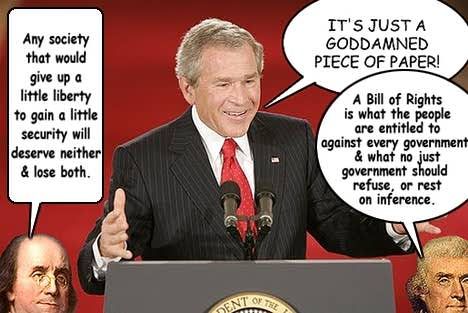
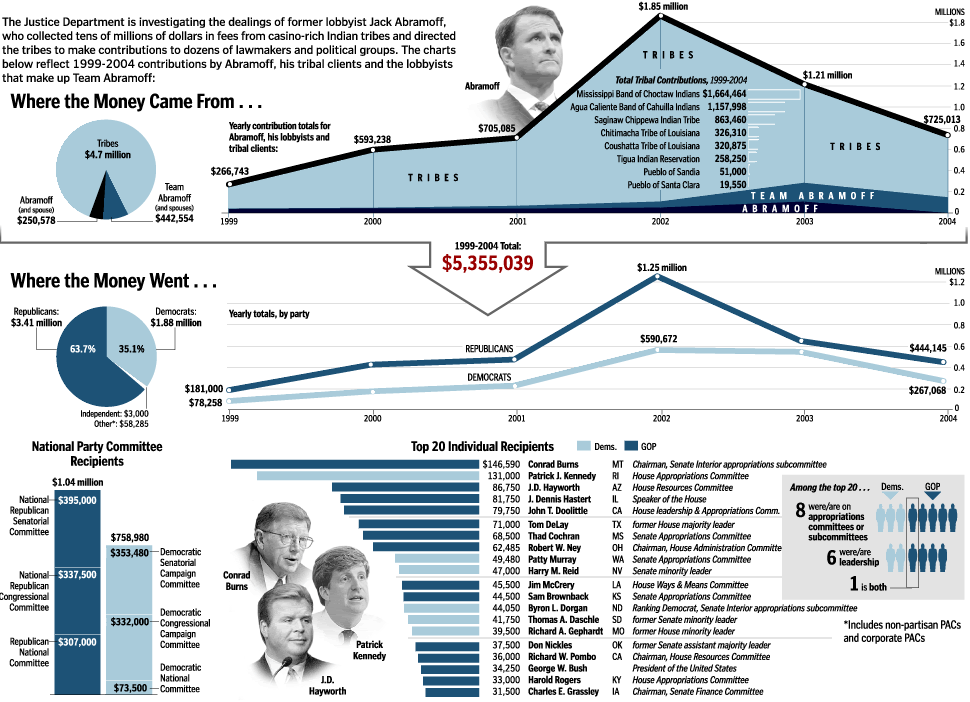




"I believe the California housing market is a bubble that is nearing its final hours," writes Robert in a report that I received yesterday. His Real Estate Crash Index has finally given a bear signal.
Robert computes that California home prices could drop as much as 42%. He comes to this analysis in a very logical and scientific way based on current and past statistics, which I won't go into here. But I will include the following paragraph from Robert's current report.
"The median price CA (California) house, for example, now sells for $533,000. If a buyer puts 20% down, the carrying cost for principle, interest, property taxes, and hazard insurance with a 30-year fixed-rate mortgage of 6.5% is $3,400 per month. If the buyer only spends 35% of the family income on housing payments -- which has been an historical norm -- this family must be earning $116,000 per year. Earning only the average of $60,300 per year, buyers are purchasing twice as much home as the can really afford. Given these statistics, is it any wonder that interest only and negative amortizing loans now account for 70% of all CA home purchase financing?
"As the CA housing mania ends and the concept of risk returns to its rightful place, there is going to be a rush for the exit doors. Speculators are going to find out -- and many for the first time ever -- that as demand continues to soften, liquidity in real estate investments is far lower than they envisioned when they went in."

New Home Sales Fall 40% In N California
News Ten in Sacramento has some breaking news. "The latest figures on home sales in Sacramento give further evidence that the Northern California real estate market is slowing down. A report from the California Building Industry Association shows new home sales in Northern California fell 40 percent during the past three months, compared to the same period last year. It's the sharpest such drop in the last 15 years."
"Pam Deangelis sees the slowdown as a correction in a market that's been overheated for several years. Deangelis said a year ago people would come in panic buying mode. 'They would come in and be anxious to buy anything we had available,' she said. '"Now they're in panic selling mode because it's taking them longer to sell their existing house.'"
"Deangelis added Cresleigh Homes is no longer taking contingency offers, because some would-be buyers have been unable to sell their current homes."


A man named by the US Department of Justice as a suicide hijacker of American Airlines flight 11 the first airliner to smash into the World Trade Centre is very much alive and living in Jeddah. Abdulrahman al-Omari, a pilot with Saudi Airlines, was astonished to find himself accused of hijacking as well as being dead and has visited the US consulate in Jeddah to demand an explanation.
Another of the men named by the FBI as a hijacker in the suicide attacks on Washington and New York has turned up alive and well. Saudi Arabian pilot Waleed Al Shehri was one of five men that the FBI said had deliberately crashed American Airlines flight 11 into the World Trade Centre on 11 September. Now he is protesting his innocence from Casablanca, Morocco.
Abdulaziz Al Omari, another of the Flight 11 hijack suspects, has also been quoted in Arab news reports. He says he is an engineer with Saudi Telecoms, and that he lost his passport while studying in Denver.
The Saudi Airlines pilot, Saeed Al-Ghamdi, 25, and Abdulaziz Al-Omari, an engineer from Riyadh, are furious that the hijackers' "personal details" - including name, place, date of birth and occupation - matched their own.
Etc. Etc. Etc.
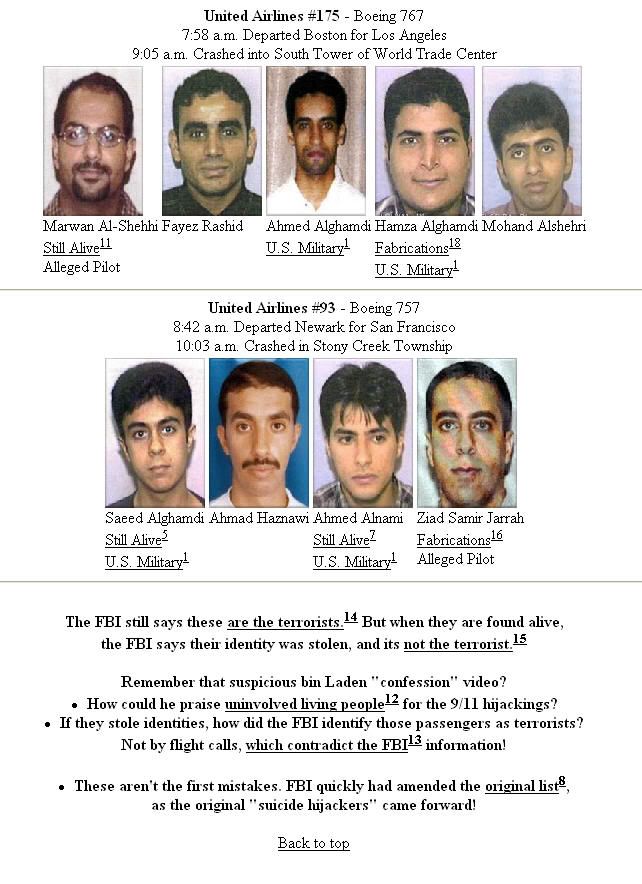
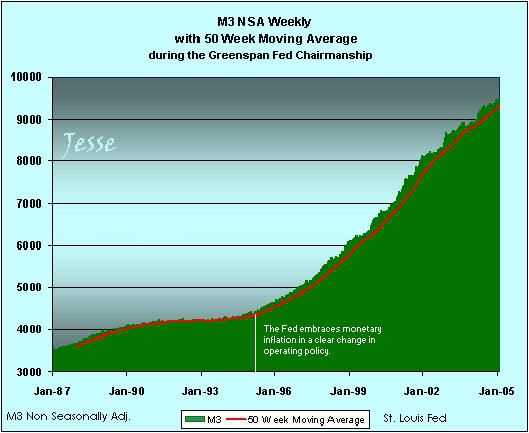
On March 23, 2006, the Board of Governors of the Federal Reserve System will cease publication of the M3 monetary aggregate. The Board will also cease publishing the following components: large-denomination time deposits, repurchase agreements (RPs), and Eurodollars. The Board will continue to publish institutional money market mutual funds as a memorandum item in this release.

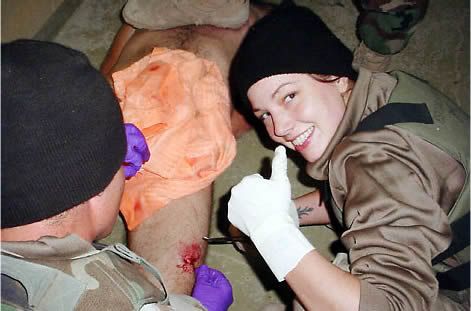
November 11, 2005 -- A group of veterans of Operations Iraqi Freedom and Desert Storm sharply criticized the Bush administration today at an event sponsored by Veterans for Common Sense in Washington, DC. Dave Debatto. a former US Army Counterintelligence Special Agent who was assigned in 2003 to Iraq, said he took part in thousands of interrogations in Iraq. He said his orders and those for his colleagues were never to lay hands on anyone, let alone torture anyone. Consequently, Debatto and other interrogators received a lot of intelligence through their cooperation with Iraqis at the outset of the U.S. occupation. However, he said when new tactics were employed in June 2003, things "went south" quickly. Intelligence dried up and Camp Anaconda, his base of operations, became "Mortarville" as it was mortar-shelled day and night.
Frank Ford, a 32-year veteran of military and counter-intelligence assignments, served in Samara, the ancient capital of Mesopotamia, during Operation Iraqi Freedom. His military service began when he served with President Richard Nixon's Presidential security detail at the Western White House in San Clemente, California.
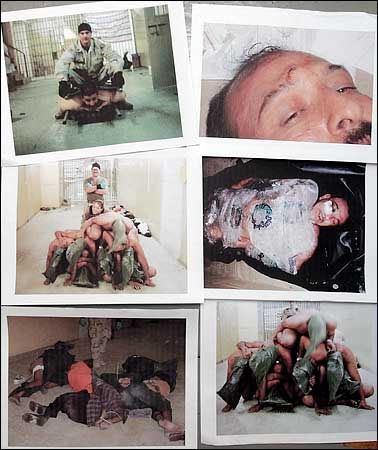
Intelligence reports on U.S. torture were sent up the military chain to Washington. The reports were ignored. Ford said, soon, interrogation became extermination. Ford requested a formal investigation of the torture. The response of the U.S. military command in Iraq was to physically assault Ford and take him to a psychiatrist. Ford was told he was imagining torture. Ford said things got uglier when he was ordered out of Iraq to Germany strapped to a stretcher. Soon after, Ford retired from government service.

Ford said soon the U.S. position in Samara first began to disintegrate n June 15, 2003 after former members of the Iraqi Mukhabarat intelligence service, along with "Saddam Fedayeen" former special forces, launched "Operation Viper," a Tet-style offensive against the U.S. The Mukhabarat warned that five U.S. soldiers would be killed per week. Ford said the insurgency has drastically increased that target number today.

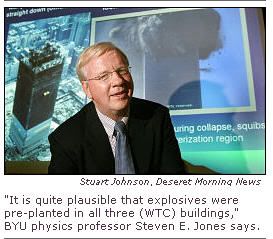
The physics of 9/11 — including how fast and symmetrically one of the World Trade Center buildings fell — prove that official explanations of the collapses are wrong, says a Brigham Young University physics professor.
In fact, it's likely that there were "pre-positioned explosives" in all three buildings at ground zero, says Steven E. Jones.
In a paper posted online Tuesday and accepted for peer-reviewed publication next year, Jones adds his voice to those of previous skeptics, including the authors of the Web site www.wtc7.net, whose research Jones quotes. Jones' article can be found at www.physics.byu.edu/research/energy/htm7.html.
Stuart Johnson, Deseret Morning News"It is quite plausible that explosives were pre-planted in all three (WTC) buildings," BYU physics professor Steven E. Jones says. Jones, who conducts research in fusion and solar energy at BYU, is calling for an independent, international scientific investigation "guided not by politicized notions and constraints but rather by observations and calculations.
"It is quite plausible that explosives were pre-planted in all three buildings and set off after the two plane crashes — which were actually a diversion tactic," he writes. "Muslims are (probably) not to blame for bringing down the WTC buildings after all," Jones writes.
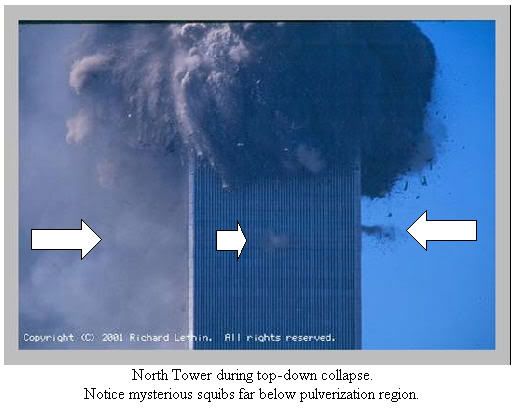
• The three buildings collapsed nearly symmetrically, falling down into their footprints, a phenomenon associated with "controlled demolition" — and even then it's very difficult, he says. "Why would terrorists undertake straight-down collapses of WTC-7 and the Towers when 'toppling over' falls would require much less work and would do much more damage in downtown Manhattan?" Jones asks. "And where would they obtain the necessary skills and access to the buildings for a symmetrical implosion anyway? The 'symmetry data' emphasized here, along with other data, provide strong evidence for an 'inside' job."
• No steel-frame building, before or after the WTC buildings, has ever collapsed due to fire. But explosives can effectively sever steel columns, he says.
• WTC 7, which was not hit by hijacked planes, collapsed in 6.6 seconds, just .6 of a second longer than it would take an object dropped from the roof to hit the ground. "Where is the delay that must be expected due to conservation of momentum, one of the foundational laws of physics?" he asks. "That is, as upper-falling floors strike lower floors — and intact steel support columns — the fall must be significantly impeded by the impacted mass. . . . How do the upper floors fall so quickly, then, and still conserve momentum in the collapsing buildings?" The paradox, he says, "is easily resolved by the explosive demolition hypothesis, whereby explosives quickly removed lower-floor material, including steel support columns, and allow near free-fall-speed collapses." These observations were not analyzed by FEMA, NIST nor the 9/11 Commission, he says.
• With non-explosive-caused collapse there would typically be a piling up of shattering concrete. But most of the material in the towers was converted to flour-like powder while the buildings were falling, he says. "How can we understand this strange behavior, without explosives? Remarkable, amazing — and demanding scrutiny since the U.S. government-funded reports failed to analyze this phenomenon."
• Horizontal puffs of smoke, known as squibs, were observed proceeding up the side the building, a phenomenon common when pre-positioned explosives are used to demolish buildings, he says.
• Steel supports were "partly evaporated," but it would require temperatures near 5,000 degrees Fahrenheit to evaporate steel — and neither office materials nor diesel fuel can generate temperatures that hot. Fires caused by jet fuel from the hijacked planes lasted at most a few minutes, and office material fires would burn out within about 20 minutes in any given location, he says.
• Molten metal found in the debris of the World Trade Center may have been the result of a high-temperature reaction of a commonly used explosive such as thermite, he says. Buildings not felled by explosives "have insufficient directed energy to result in melting of large quantities of metal," Jones says.
• Multiple loud explosions in rapid sequence were reported by numerous observers in and near the towers, and these explosions occurred far below the region where the planes struck, he says.

"According to the Treasury Department, from 1776-2000, the first 224 years of U.S. history, 42 U.S. presidents borrowed a combined $1.01 trillion from foreign governments and financial institutions, but in the past four years alone, the Bush administration borrowed $1.05 trillion."
"No American political leadership has ever willfully and deliberately mortgaged our country to foreign interests in the manner we have witnessed over the past four years," said Tanner. "If this recklessness is not stopped, I truly believe our economic freedom as American citizens is in great jeopardy."
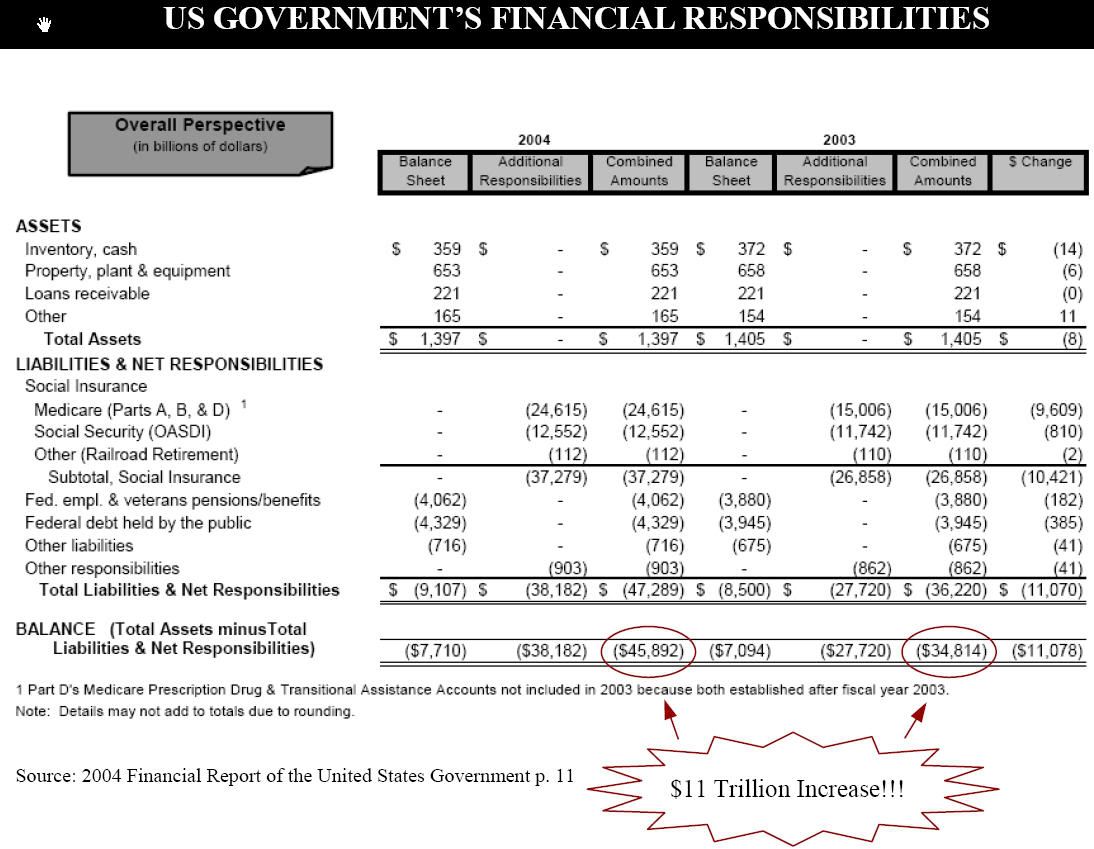
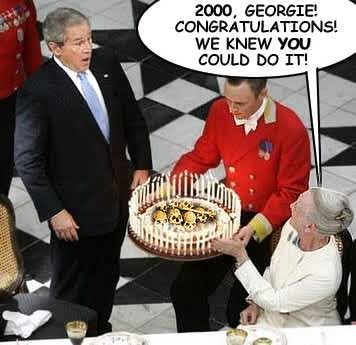
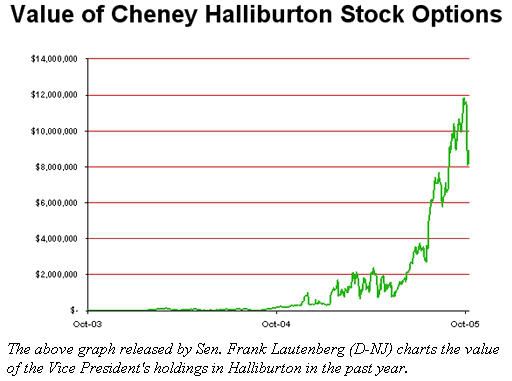
Sen. Frank Lautenberg (D-NJ) asserts that Cheney's options -- worth $241,498 a year ago -- are now valued at more than $8 million....
“Halliburton has already raked in more than $10 billion from the Bush-Cheney Administration for work in Iraq, and they were awarded some of the first Katrina contracts," Lautenberg said in a statement. "It is unseemly for the Vice President to continue to benefit from this company at the same time his Administration funnels billions of dollars to it. The Vice President should sever his financial ties to Halliburton once and for all.”
Cheney continues to hold 433,333 Halliburton stock options. The company has been criticized by auditors for its handling of a no-bid contact in Iraq. Auditors found the firm marked up meal prices for troops and inflated gas prices in a deal with a Kuwaiti supplier. The company built the American prison at Guantanamo Bay...
...Cheney told "Meet the Press" in 2003 that he didn't have any financial ties to the firm.
“Since I left Halliburton to become George Bush's vice president, I've severed all my ties with the company, gotten rid of all my financial interest," the Vice President said. "I have no financial interest in Halliburton of any kind and haven't had, now, for over three years.”
Cheney continues to received a deferred salary from the company. According to financial disclosure forms, he was paid $205,298 in 2001; $162,392 in 2002; $178,437 in 2003; and $194,852 in 2004.

They will engage their country in ridiculous, expensive, fantastical wars, to keep the minds of men in continual hurry and agitation, and under constant fears and alarms; and, by such means, deprive them both of leisure and inclination to look into publick miscarriages. Men, on the contrary, will, instead of such inspection, be disposed to fall into all measures offered, seemingly, for their defence, and will agree to every wild demand made by those who are betraying them.
When they have served their ends by such wars, or have other motives to make peace, they will have no view to the publick interest; but will often, to procure such peace, deliver up the strong-holds of their country, or its colonies for trade, to open enemies, suspected friends, or dangerous neighbours, that they may not be interrupted in their domestick designs.
I have often wondered at the folly and weakness of those princes, who will sacrifice hundreds of thousand of their own faithful subjects, to gain a precarious and slavish submission from bordering provinces, who will seek all opportunities to revolt; which cannot be prevented but by keeping them poor, wretched, and miserable, and consequently unable to pay the charges of their own vassalage; when, if the same number of men and the sums of money were usefully employed at home, which are necessary to make and support the conquest, they would add vastly more to their power and empire.
